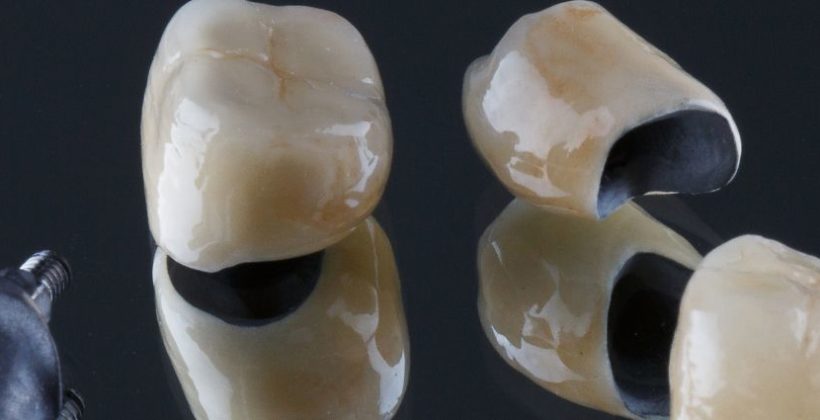
If you’re looking for options for tooth replacement, you may want to consider a crown and bridge.
There are many reasons why we might lose a tooth – an accident, an untreated cavity, or gum disease. Some larger health problems like high blood pressure, diabetes, poor nutrition, or even arthritis can cause a tooth to fall out.
Of course, if you’re a child, losing a tooth is expected, and a lost “baby tooth” will be replaced by an adult tooth. But if you’re an adult, replacing your teeth is a little more complicated.
We’ve talked in our blogs about other options for tooth replacement like dental implants and dentures. So, what is different about a crown and bridge?
What are Crown and Bridge?
A dental crown is a hollow artificial tooth used to “cap” a damaged tooth. In a crown and bridge, two crowns are placed on healthy teeth on either side of a gap caused by missing teeth. The crowns anchor the bridge – an artificial tooth or teeth that fill the gap.
Unlike dentures, a crown and bridge are permanent and cannot be removed (except by your dentist).
Caring for a Crown and Bridge
A properly cared-for crown and bridge can last 10 years or more. To care for it properly, you should floss and brush your crown and bridge every day.
Although you brush your bridge just like your natural teeth, you will need to use a floss threader to floss in the tight space between your gum line and the bottom of your dental bridge. Your Dentist in Midland should be able to show you how to floss your new bridge.
What is the Difference Between a Crown and Bridge and Other Tooth Replacement Options?
There are a few reasons why your dentist may recommend one tooth replacement option over another. The health of your teeth, gums, and jawbone is a big factor. Cost can be another. In the end, it may come down to personal choice.
- Dental implants are artificial teeth implanted on a titanium root affixed to your jawbone. They are permanent and look and function the most like natural teeth. You brush and floss dental implants just like regular teeth.
Dental implants may not be recommended if the underlying jawbone is not strong enough to support the titanium root. - Dentures are a removable tooth replacement option. Dentures look like natural teeth, but sometimes you can see the wires or artificial gums used to create the dentures. Dentures can be removed for cleaning or sleeping at night. Over time, dentures might become loose, and shift around in your mouth.
- A crown and bridge are an option in between implants and dentures. Like a dental implant, a crown and bridge is permanent and will not shift around in your mouth. Like dentures, the bridge may be made up of more than one artificial tooth.
Crowns and bridges may not be recommended if the surrounding teeth cannot reliably support a crown.
Do I Need to Replace a Missing Tooth?
Proper replacement of missing teeth is important to keep your teeth aligned, maintain your facial shape and smile, and help you eat and speak naturally. In addition to cosmetic reasons, replacing a missing tooth can help:
- Reduce your chance of gum disease – leaving a gap between your teeth allows food and debris to build up, increasing your chance of cavities and gum disease. Your gums may also recede in the gap.
- Prevent deterioration of your jawbone – your jawbone is strengthened as you chew. When you lose a tooth, the jawbone underneath the missing tooth no longer gets a workout and may begin to shrink.
- Lessen your chances of losing more teeth – the deterioration of your gums and jawbone could lead to the loss of more teeth.
Interested in Tooth Replacement Options?
If you need a dentist in Midland, contact Midland Bay Dental. Our friendly dental team is ready to put you at ease and answer any of your dental concerns. We are committed to helping you keep your teeth and gums healthy, and will only ever recommend treatment we believe is necessary. Find out why our patients love the care they receive at Midland Bay Dental. Contact us today to book an appointment.
Follow Midland Bay Dental on Facebook.


Leave a Reply